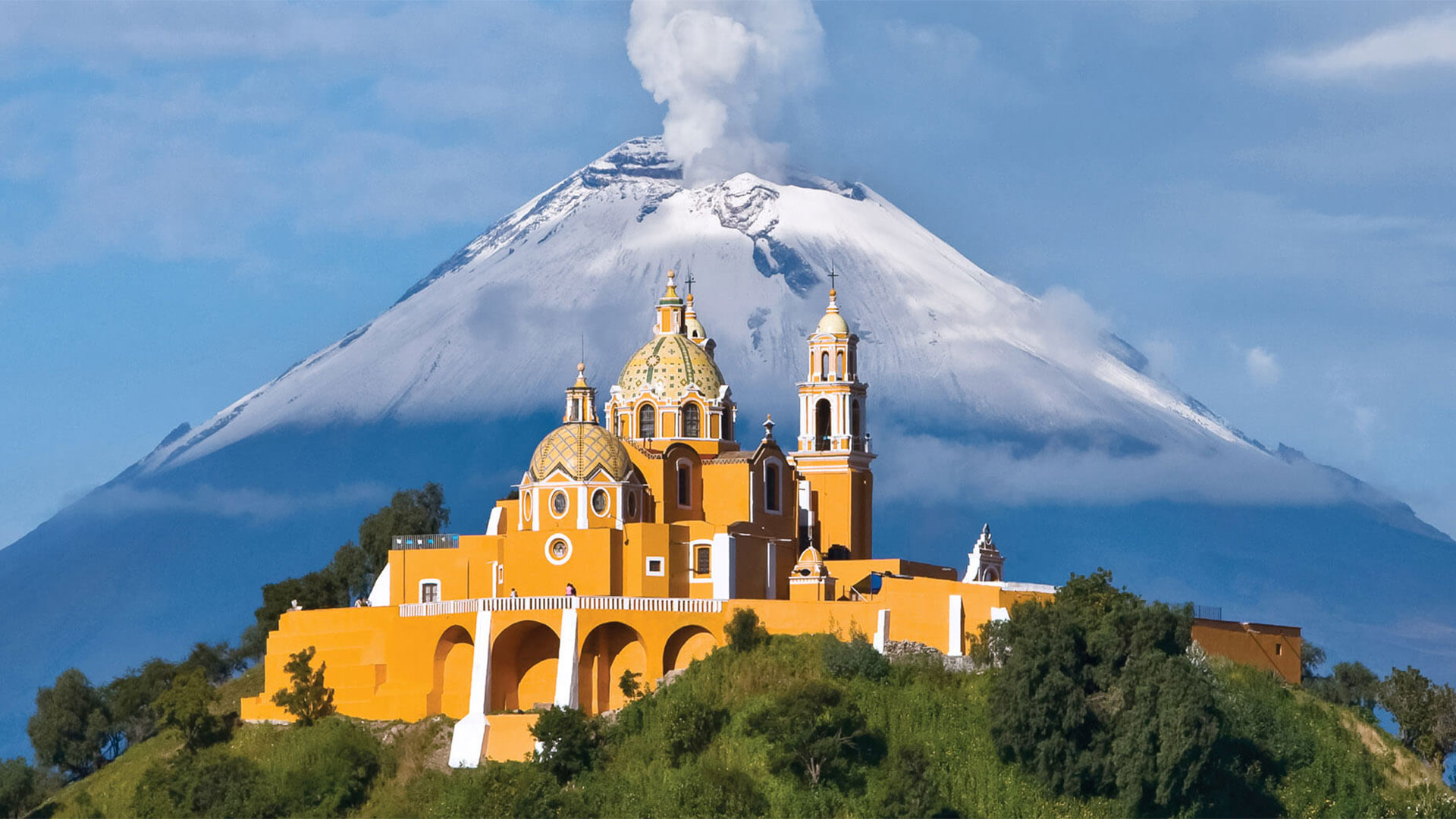
Things to do in Puebla México - Art / Offbeat
Activities & Experiences
Amparo Museum
The Amparo Museum (Museo Amparo) showcases a permanent collection of over 6,000 works of pre-Hispanic origin and features multiple temporary exhibitions displaying Novo Hispano, modern and contemporary art. Situated in a 16th-century colonial structure that formerly housed a hospital, the building was converted by Pedro Ramirez Vazquez, a renowned figure in Mexican architecture. The museum has a souvenir shop, libraries and a beautiful rooftop terrace cafeteria which offers magnificent view of the nearby cathedral.
Opening Hours
Wed-Mon: 11:00 am - 7:00 pm Tues: Closed 24 & 31 Dec: 10:00 am - 2:00 pm 25 Dec & 1 Jan: 2:00 pm - 6:00 pm
Website
https://museoamparo.com/
International Museum of Baroque
Built by Toyo Ito, recipient of the 2013 Pritzker Architecture Prize, the International Museum of Baroque (Museo Internacional del Barroco) opened in 2016. It offers an overview of the prolific Baroque period in Europe and Latin America during the 17th and 18th centuries. The museum is situated in the Angelopolis, one of the most modern areas of the city. Parks, bike paths, shopping malls, universities, cultural venues and the Star of Puebla Ferris wheel are located nearby.
Opening Hours
Tues-Sun: 10:00 am - 7:00 pm
Constancia Museums
In 1835, businessman Esteban de Antuñano opened the first factory in Mexico driven by hydropower which remained in operation until 1991. Today, the nearly 7,000-meter structure houses three museums—the House of Music in Vienna (Museo Casa De La Musica De Viena En Puebla), the Puppet House (Casa De Las Marionetas Mexicanas) and the Children’s Museum (Museo Infantil)—which are integrated into the original architecture.
Opening Hours
Tues-Sun: 10:00 am - 6:00 pm
Website
https://www.mexicoescultura.com/recinto/67172/museo-infantil-la-constancia-mexicana.html
Bubas Bridge
In 2014, Puebla’s local government found evidence of a network of tunnels beneath the city. Further exploration revealed an underground passage over 70 meters in length with a history reaching back over 300 years. Constructed in 1682, the tunnel known as Bubas Bridge (Puente de Bubas) originally connected Bubas Hospital to the city and it continued to serve as hidden road for the distinguished upper class families of colonial-era Puebla for many years. Today, the Secrets of Puebla program offers tours of the tunnel to visitors.
Palafoxian Library
Located in Puebla’s historic centre, the Palafoxian Library (Biblioteca Palafoxiana) is widely considered to be the oldest public library in The Americas. Established in 1646 with a donation of 5,000 volumes from Bishop Juan Palafox y Mendoza, the library is recognized for its antiquity, originality and artistic value. A museum since 1981, the library holds over 42,000 books and manuscripts dating back to the 15th century and continues to serve as a repository for researchers from around the world. UNESCO added the library to its Memory of the World Register in 2005.
San Andrés Cholula and San Pedro Cholula
Recognised as 'Pueblo Mágicos' (Magic Towns) of Mexico since 2012, San Andrés and San Pedro Cholula are the two municipalities that make up Cholula, a city and district located in the metropolitan area of Puebla, Mexico. These municipalities are celebrated for a rich heritage spanning over 2,000 years.
Cholula has been a fervent religious community since pre-Hispanic times, renowned for its plethora of churches. In San Andrés Cholula, the main attraction is the Great Pyramid of Cholula, towering over 60 metres in height. It is the largest pyramid in the world by volume, covering an area of more than 400 metres per side, with a network of tunnels in the ruins open for exploration. A 16th-century church sits atop the pyramid, providing an impressive panoramic view.
In San Pedro Cholula, the main attraction is the Plaza de la Concordia where the San Gabriel Convent is located. The convent houses the Franciscan Library and the Guerrero Portal, the longest arched portal in Mexio that offers a variety of restaurants and cafés.
Former Convents of Huejotzingo and Calpan
Recognised as UNESCO World Heritage Sites since 1994, Huejotzingo and Calpan are nestled on the slopes of the volcano Popocatépetl. These former convents belong to a collective of 14 monasteries in the area that were built in the 16th century by the Augustinians, Franciscans, and Dominicans to evangelise the surrounding region.
The communities of Huejotzingo and Calpan are very festive and host a variety of celebrations throughout the year. Huejotzingo's carnival is renowned for its widespread local participation, lavish costumes, and authentic representations of Puebla's history.
Between July and August, Calpan holds one of the best Chiles en Nogada festivals in the country. While this exquisite dish is available across Puebla, the unique farm-to-table experience in Calpan is especially memorable.